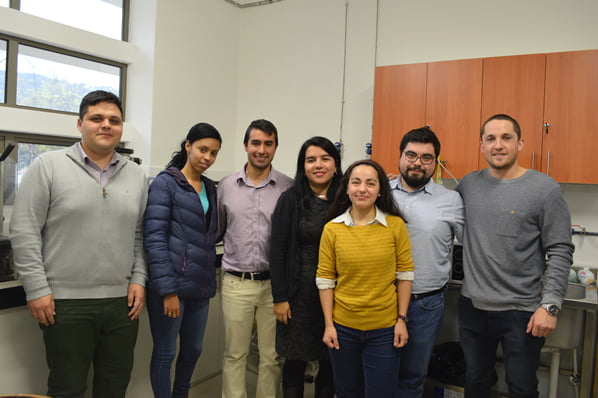Research with graphene with hemostatic applications
kfernandez@udec.cl
The development of a sponge based on graphene oxide for the treatment of bleeding wounds -profuse or chronic-, with antibacterial and antimicrobial properties, is one of the projects currently being developed in the Biomaterials Laboratory of the Department of Chemical Engineering of our Faculty of Engineering, whose new facilities were re-inaugurated last Thursday, October 5 on the third floor of the Gustavo Pizarro Building.

Research in the Biomaterials laboratory is varied, but the teacher and researcher, Katherina Fernández , highlights the Fondecyt project that she currently heads, and which is in the line of developing materials with biomedical applications, specifically haemostatic, that is, in the treatment of wounds. “I have been working on this line for four years, but this project is focused on developing materials for a hemostatic application, a subject not explored in our country, in which we began working with polymers, reaching a material that is much more available and more cheap, such as graphene oxide, so today we are developing sponges called aerogels, based on these graphitic materials, particularly made of grapheme”, he expressed.
And it is that as the teacher mentions, graphene oxide is part of the so-called graphitic materials, such as the carbon nanotube, which is characterized by its numerous applications derived from its properties, both electrical and mechanical, and one of them is in the biomedical
Constanza Mellado , a master’s student in the Department of Chemical Engineering and who worked on this project since her undergraduate thesis, has more details about this research carried out in the laboratory “I started by synthesizing and characterizing graphene oxide, which is the precursor material of these aerogels , on my undergraduate thesis, and in that last year I started working with professor Kathy in the master’s degree, so that thesis was about aerogels. And the aerogels that I made were made of graphene oxide with polyvinyl alcohol, and we also incorporated grape skin and seed extracts to take advantage of their bioactive properties, with the aim that these extracts could be released. So we focus on studying two things mainly; coagulation of blood, evaluate its coagulating properties, and the ability to release the extracts” .
Currently the project, in which academics from Materials Civil Engineering – among them Manuel Meléndrez -, Biological Sciences and Chemistry and Pharmacy, are also collaborating , is in the stage of materials elaboration, coagulation capacity of these and evaluation of toxicity in blood cells, since the idea is to develop different approaches, the first for profuse bleeding and the second for chronic wounds. “What we physically have today is a sponge created based on graphene oxide, which at the end of this research will lead to the creation of a patch both for the treatment of acute wounds, in which the absorption of a lot of blood is needed and that the coagulation cascade is quickly activated, such as for chronic wounds, such as diabetic foot or ulcers” , said Fernández.Internal Project
Full Professor – Katherina Fernandez E.

